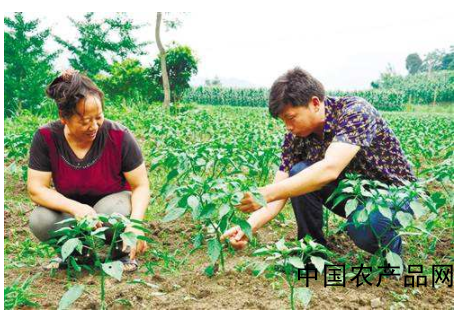How to manage pepper cultivation?
[ Agricultural Products Network] Chili is warm, hi-water, and hi-fertilizer, but it is easy to get sick at high temperature, and the leeches are easy to die, and the fat is easy to burn. Different management requirements are required at different stages of the whole growth period. After harvesting, it is necessary to promote roots and promote mites before harvesting; to start harvesting to fruiting period, to promote mites and attack fruit; to enter the hot season, to protect roots and prevent Loss and death; in the end, we must continue to strengthen management, increase production and income. So how do you manage the cultivation of peppers ?

1. Start management before harvesting
In this period, the ground temperature is low and the root system is weak. That is, light watering, early topdressing; diligent cultivating, small seedlings; slow seedling water light pouring, can be combined with a little bit of manure, timely cultivating after pouring, warming and protecting the roots, seedlings should not be too long, about 10 days, It can be smallly poured and adjusted to adjust the relationship between roots and roots. After Dunmiao timely watering, dressing, improve early yield, nitrogen-based fertilizer, and with applying some potassium phosphate, promoting healthy seedling trees, to prevent falling, timely removal of the collateral D1 flower stem downward.
2. Management from the period of collection to the fruiting period
At this stage, the temperature gradually rises, the rainfall gradually increases, and pests and diseases occur one after another, which is a crucial period for determining the level of production. In order to prevent premature aging, the pepper should be harvested in advance, watered in time, the soil moisture is often maintained, and the fruit is promoted, and the ridge is sealed in the hot season. In the fruit-bearing period, the soil should be preserved before the ridge is closed, and the topdressing should be combined with the soil for topdressing.
3. Management during the hot season and beyond
High temperature rainy season is easy to induce viral diseases, falling flowers and fruit, and sometimes a lot of leaves. Therefore, the high temperature and dry years must be irrigated in the dry period, but not in the tail of the drought period, always keep the soil moist and inhibit the occurrence and development of viral diseases. After the rain, apply a small amount of fertilizer to protect the mites, and also timely irrigation to prevent drought after the rainy season and form a peak of viral disease. The hot season should be irrigated in the morning and evening. In the full bloom period, spray 800-1000 times chlormequat 3-4 times, which has better effect of maintaining flowers and increasing yield.
4, the management of the late fruit
After the high temperature rainy season, the temperature will turn cold and the green pepper plants will resume normal growth. It is necessary to strengthen management, promote the formation of the second peak of the results, increase the yield in the later stage, and timely water the water, and combine the watering with the quick-acting fertilizer to supplement the soil nutrition. Insufficient.
The above information comes from the network, for your reference, welcome to leave a message interactive!
Metallurgical Microscope ,Optical Metallurgical Microscope,Portable Metallurgical Microscope,Inverted Metallographic Microscope
Ningbo ProWay Optics & Electronics Co., Ltd. , https://www.proway-microtech.com